Forbidden Cities: A Guide to the World’s Secluded Settlements

Updated On: April 04, 2024 by Raghda Elsabbagh
Throughout history, the concept of ‘forbidden cities’ has captured our collective imagination. These closed communities, often shrouded in mystery and inaccessible to the outside world, have stood as symbols of power and sovereignty. Spanning continents and centuries, from the enigmatic compounds of Soviet Russia to the palatial grandeur of China’s Forbidden City, these cities have served as the nerve centres of empires and the bastions of their deepest secrets. Somewhere between the realms of myth and reality, they resonate with the tales of the last emperors and their legacies.
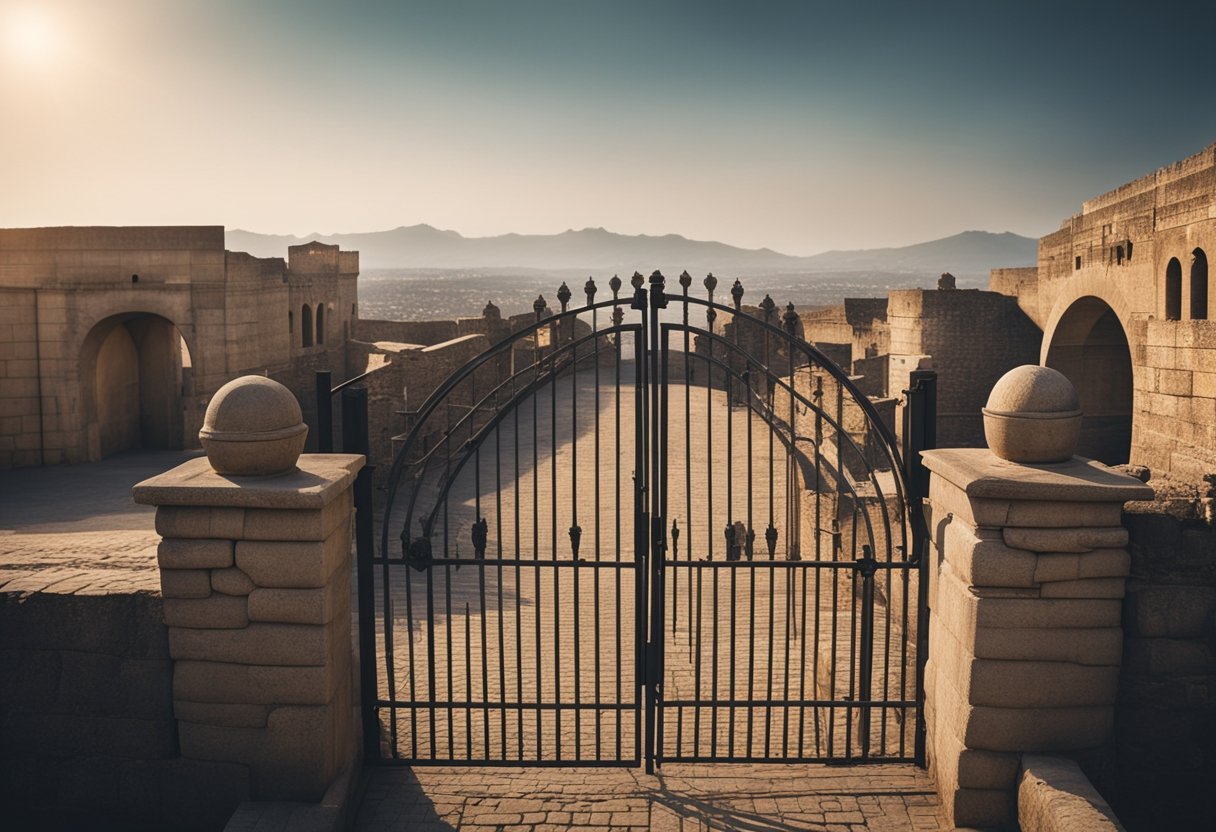
The dual needs of defence and control have always underscored the creation of these cities. Natural and man-made defences have served to protect and isolate these cities from external influences, while internally, the architecture often reflects an intricate dance of form and function, balancing aesthetics with the rigours of security and exclusivity. As time has woven its narrative through the walls of these cities, many have transitioned from seats of monarchy and military might to become celebrated UNESCO World Heritage Sites, treasured for their cultural and historical significance.
Our interest in forbidden cities extends beyond their imposing walls and into the fabric of city life that once thrummed within. As we integrate these remarkable sites into modern tourism, we embark on a journey that bridges the chasm between bygone monarchy and modernity, inviting us to experience a world that once was and the enduring artistry left in its wake.
Table of Contents
Historical Emergence of Forbidden Cities
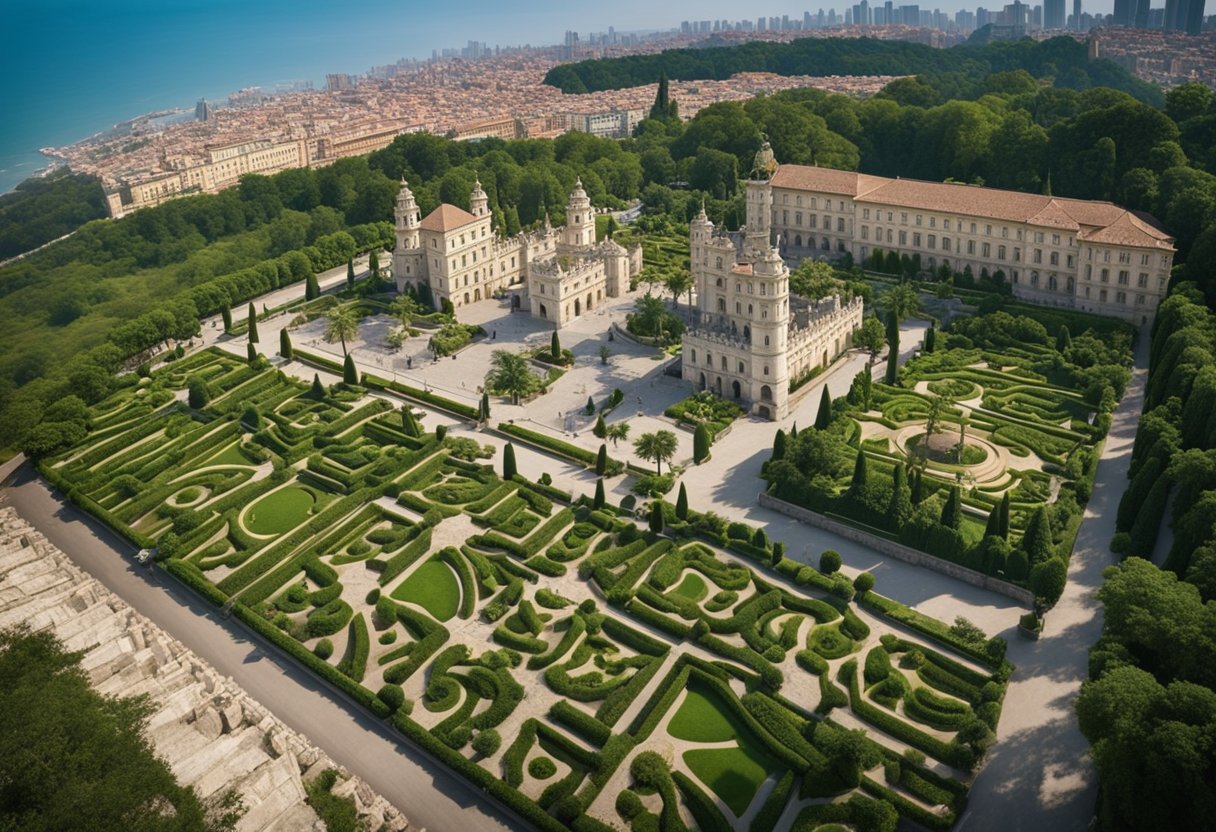
The origin of forbidden cities, areas designated exclusively for the ruling elite and off-limits to the general public, can be traced back to various civilisations that sought to consolidate power and mystique around their rulers. Perhaps the most iconic example of a forbidden city is Zijin Cheng, known as the Forbidden City in Beijing, the then capital of Imperial China.
Founded during the Ming Dynasty, the construction of the Forbidden City was decreed by Emperor Yongle, a powerful ruler who decided to move the capital from Nanjing to Beijing. In 1406, work commenced on what would become the largest and most complete imperial palace complex in the world, housing emperors for nearly 500 years.
- Ming Dynasty (1368–1644)
- Qing Dynasty (1644–1911)
- Establishment by Zhu Yuanzhang
- Expansion under Emperor Yongle
The Forbidden City served as the home of 24 emperors from both the Ming and Qing dynasties, cementing itself as the political and ritual heart of the nation. Each corner and carefully planned structure within its walls contributed to a grandeur that exemplified the absolute authority of the emperor.
While the Forbidden City remains the most renowned, similar concepts have appeared in different cultures, where rulers created exclusive spaces that symbolised their supremacy and isolated governance. For example, palace compounds in various kingdoms have often been inaccessible to common citizens and reserved for the aristocracy and their servants.
Our understanding of the historical emergence of these cities is not solely predicated on exclusivity and power but also on the remarkable architecture and cultural significance they embody. They stand today not just as relics of the past but as living museums, offering us insight into the opulent lives of the rulers who dwelled within their confines.
Architectural Marvels and Design
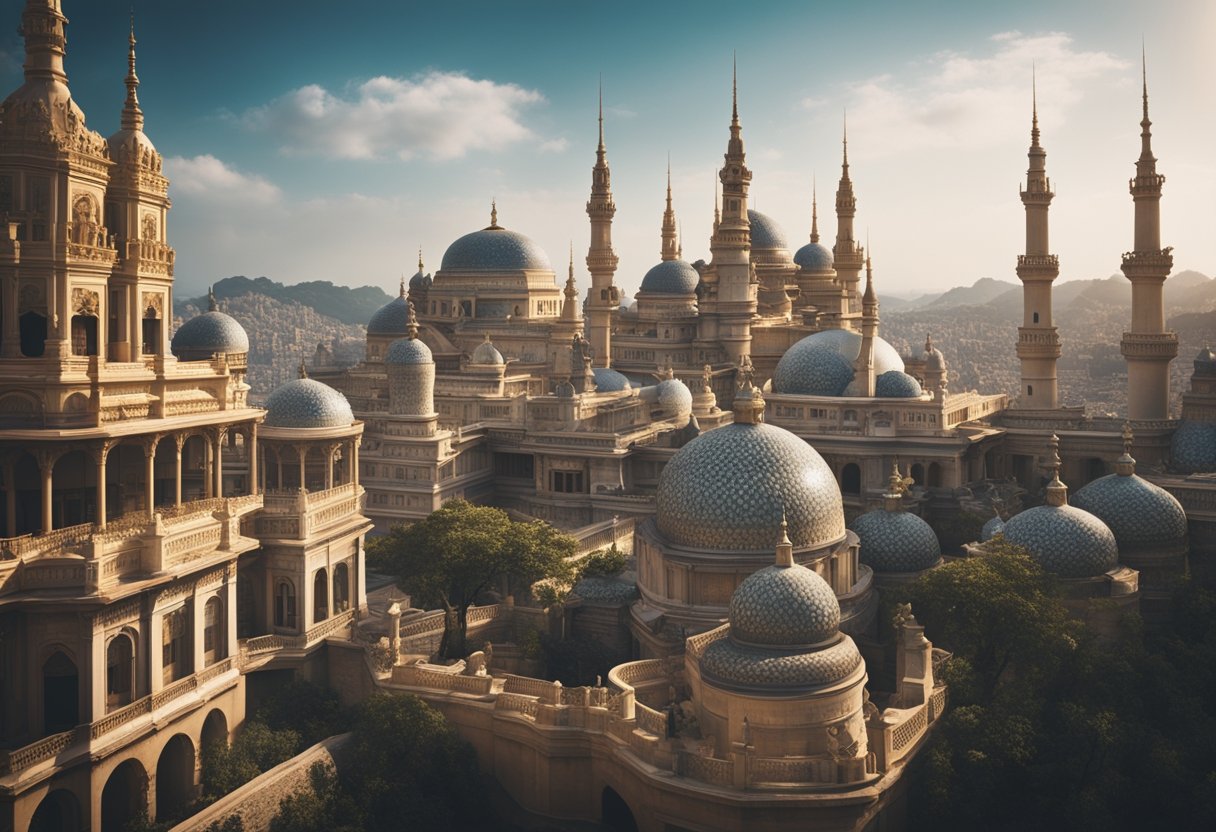
Exploring the Forbidden Cities unveils a world where architecture is not merely about structures but a deeper representation of culture, power, and cosmic order. We invite you to uncover the ingenuity behind these closed communities.
Foundations of Forbidden City Architecture
Forbidden City in Beijing, a pinnacle of Chinese imperial design, showcases traditional Chinese palatial architecture‘s magnificence. Founded on rigid symmetry, the layout reflects the hierarchical nature of Chinese society. Central to the design is the Meridian Gate, leading to the Outer Court, which housed the Hall of Supreme Harmony, where grand ceremonies unfolded. This largest wooden structure in China, sitting atop a three-tier marble terrace, symbolised the emperor’s supreme power.
Significance of Feng Shui in Design
The Forbidden City’s design is a testament to the integration of Feng Shui principles, aiming to achieve balance and cosmic order. Regal Marble Bridges guide across an encompassing moat, reflecting the natural world’s importance in site selection and building orientation. Inner Court buildings align with the cardinal directions, with the belief that this alignment channels positive energy, auspicious for the emperor’s rule.
Prominent Buildings and Structures
While the Outer Court speaks of public display, the Inner Court was the emperor’s private sanctuary. Here, structures like the Palace of Heavenly Purity and the Hall of Central Harmony provided intimate spaces for residence and governance. Towers at each corner of the wall stood guard, combining utility with aesthetic elegance. The architectural prowess extended to the intricate details of roof designs and the use of colours, each with symbolic meaning and purpose.
The Political Significance of Forbidden Cities
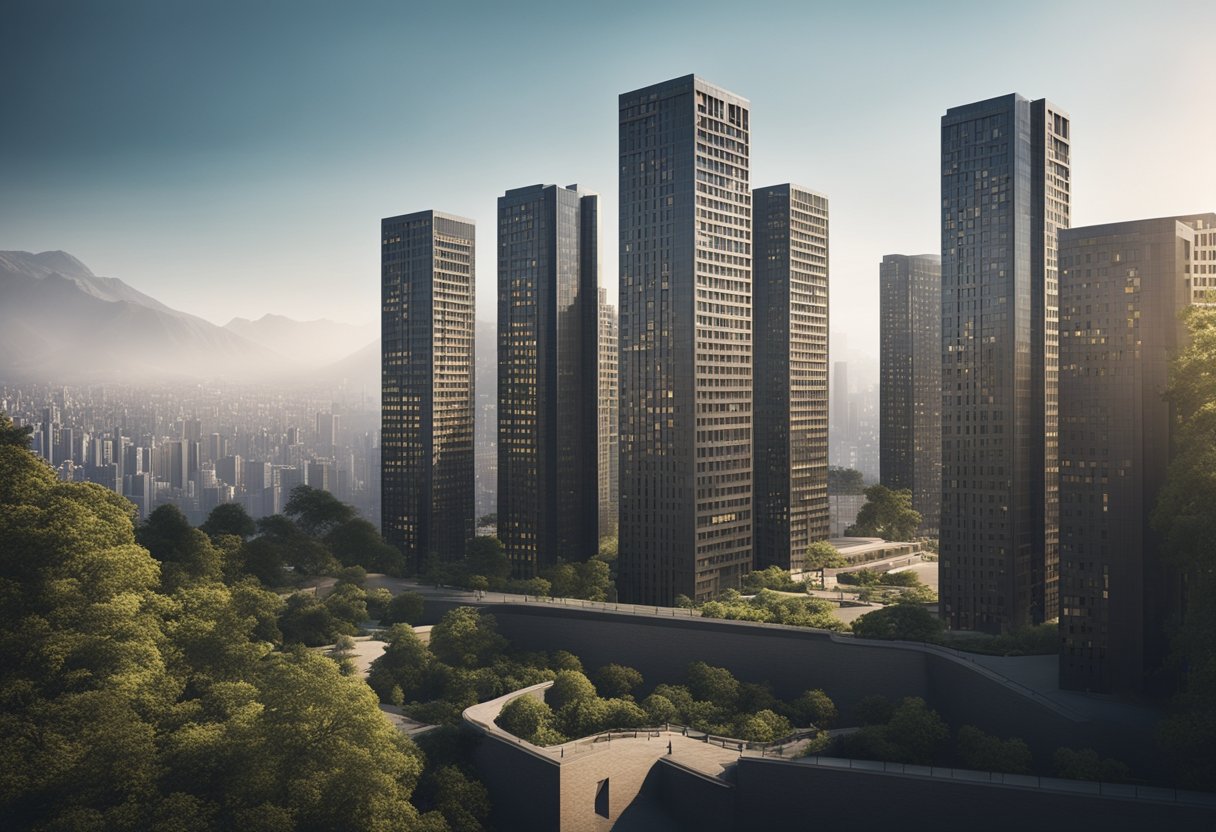
Before we delve into the specifics, it’s crucial to understand that Forbidden Cities across the world have served as seats of immense political power and governance. They were both symbols and instruments of authority, influencing the course of history in their respective nations.
Centres of Imperial Power
Forbidden Cities were the pivotal centres of imperial power. They housed not only the emperors and their courts but also served as ceremonial sites where significant events took place. In China, the Forbidden City in Beijing was the physical embodiment of the empire’s strength. At its core sat the Dragon Throne, a symbol of the emperor’s absolute power and connection to the divine. Within these walls, Confucian ideology was propagated, reinforcing the emperor’s role as the ‘Son of Heaven.’ This illustrious palace was not just a residence but a strategic venue where emperors would meet with officials to make decisions that shaped the kingdom.
Role of Forbidden Cities in Governance
The role of Forbidden Cities in governance cannot be overstated. The Forbidden City, as the imperial palace, functioned as the command hub where the administrative and bureaucratic machinery of the empire operated. Key decisions regarding war, peace, and territorial administration were made there. The layout of the Forbidden City, which reflected cosmic order and governance principles from Confucian ideals, was designed to reinforce the legitimacy and moral righteousness of the emperor’s rule. Up until the fall of the Qing Dynasty and the rise of the Republic of China, the Forbidden City remained the political epicentre where the empire’s fate was continuously forged.
Cultural Heritage and City Lifescape
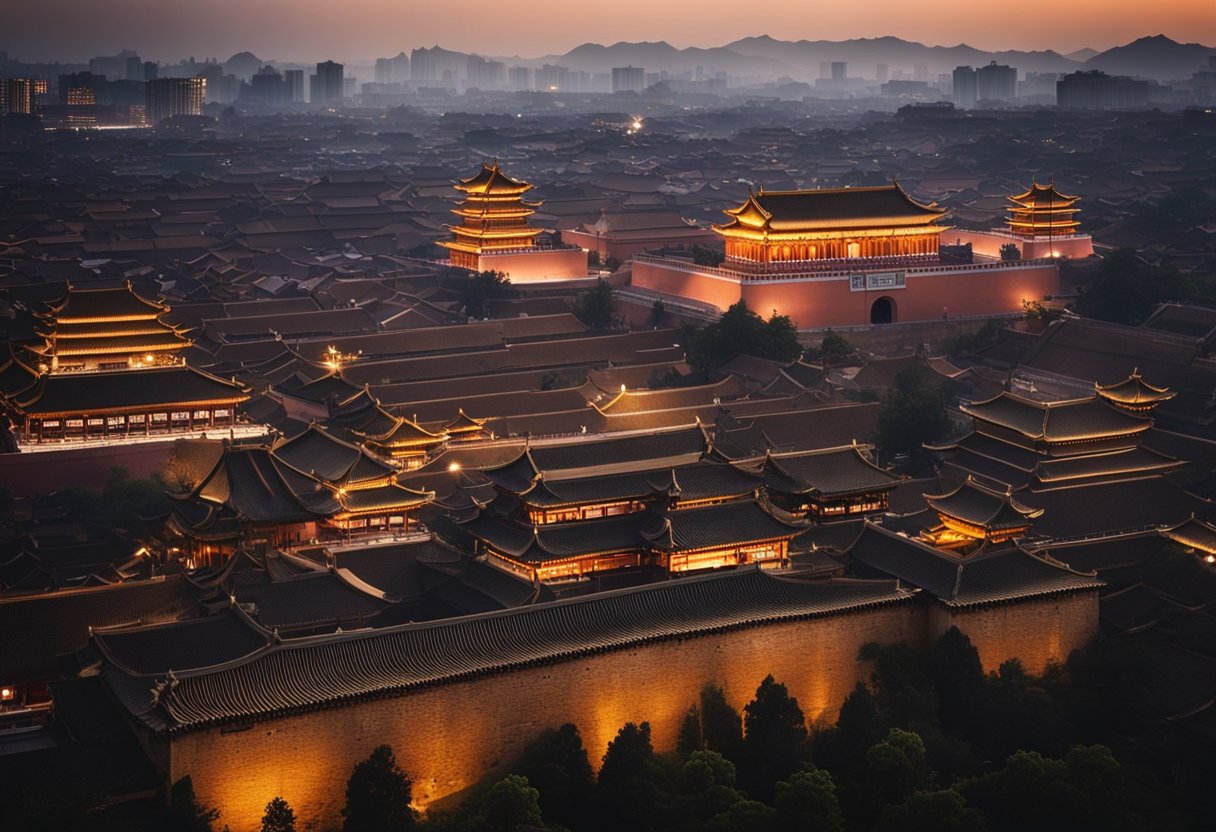
In closed communities like the Forbidden City, cultural heritage shapes the lifescape profoundly, creating a unique interplay between daily practices and philosophical undertones.
Daily Life and Protocol
The Forbidden City, also known as the Palace Museum, stands as a testament to the meticulous organisation and protocol of ancient Chinese society. High walls and grand ancient buildings delineate the boundary between the royals and commoners, emblematic of the societal hierarchy. Within these walls, every aspect of daily life was governed by strict social codes, which influenced not only the conduct of the court but also its architectural layout. For example, the central axis was reserved for the emperor, reflecting his supreme status.
Religious and Philosophical Influences
Religious and philosophical thoughts deeply embedded in Chinese culture, such as Daoism, were reflected throughout the city. Serene Daoist temples nestled within the high walls of the city provided spiritual solace and reinforced the divine right of the rulers. Philosophical influences shaped various elements, such as the names and designs of the halls, inferring harmony between heaven and earth, a core precept of Daoism.
Forbidden Cities as UNESCO World Heritage Sites
Within the portfolio of UNESCO World Heritage Sites, some locations boast incredibly rich histories and have served as exclusive precincts for the societal elite. These ‘forbidden cities’ encapsulate the zenith of cultural grandeur and have become centres of conservation efforts and global recognition.
Conservation and Global Recognition
The Forbidden City in Beijing is one of the most illustrious examples of these secluded enclaves. As a UNESCO World Heritage Site, its historical importance and exceptional preservation have granted it a revered status. This symbol of imperial power has, over the centuries, maintained its architectural magnificence and cultural relevance, becoming a cornerstone of Chinese civilisation. UNESCO’s recognition underscores the need for continued conservation of such sites, recognising their universal value to humanity.
This majestic complex stands as a testament to Chinese architectural tradition, encompassing hundreds of meticulously crafted wooden structures that have withstood the test of time. Efforts to preserve the Forbidden City are not just about maintaining a physical space but also about safeguarding the intangible heritage that it represents. For us, such recognition by UNESCO signals a global appreciation and commitment to protect these culturally and historically significant sites for future generations.
The Last Emperors and Their Legacies
The twilight years of monarchies often leave profound impressions on history, and the finales of the last emperors were no exception, shaping the cultural and political landscapes that followed.
From Puyi to the End of Monarchy
Puyi, the last emperor of imperial China, remains an intriguing figure because of his unique role in the country’s transition from the millennia of imperial rule to the Republican era. Ascending the throne at a tender age during the waning days of the Qing Dynasty, Puyi’s reign was short-lived. Facing immense pressure, the young emperor abdicated in 1912, only to be reinstated briefly during the Japanese occupation. The end of his monarchy marked not only a personal fall from grace but also the conclusion of the ancient dynastic systems across Asia.
- Puyi (1906-1967): The Xuantong Emperor, known posthumously as Puyi
- End of Monarchy: Abdicated in 1912, closing the chapter on the Qing Dynasty
Cultural Impact of Former Monarchs
The legacies of bygone emperors like Emperor Qianlong and Puyi continue to shape China’s cultural identity. Qianlong is celebrated for his patronage of the arts and expansion of the Chinese empire, setting precedents for cultural and political norms. Despite Puyi’s fraught history, his life after his reign has been immortalised in popular culture, adding layers to the narrative of imperial rule’s complexity. The periods of governance by figures such as Empress Dowager Cixi, with her powerful political influence during the late Qing Dynasty, have inspired countless works of literature and film.
- Empress Dowager Cixi (1835–1908): A formidable influence behind the throne before Puyi’s time
- Sun Yat-sen: His revolutionary ideas led to the eventual republic that replaced the Qing Dynasty
Our examination of these emperors reveals how their decisions and characters influenced the societal shifts that followed their rule and how their memories are preserved through cultural expressions across generations.
Transition from Monarchy to Modernity
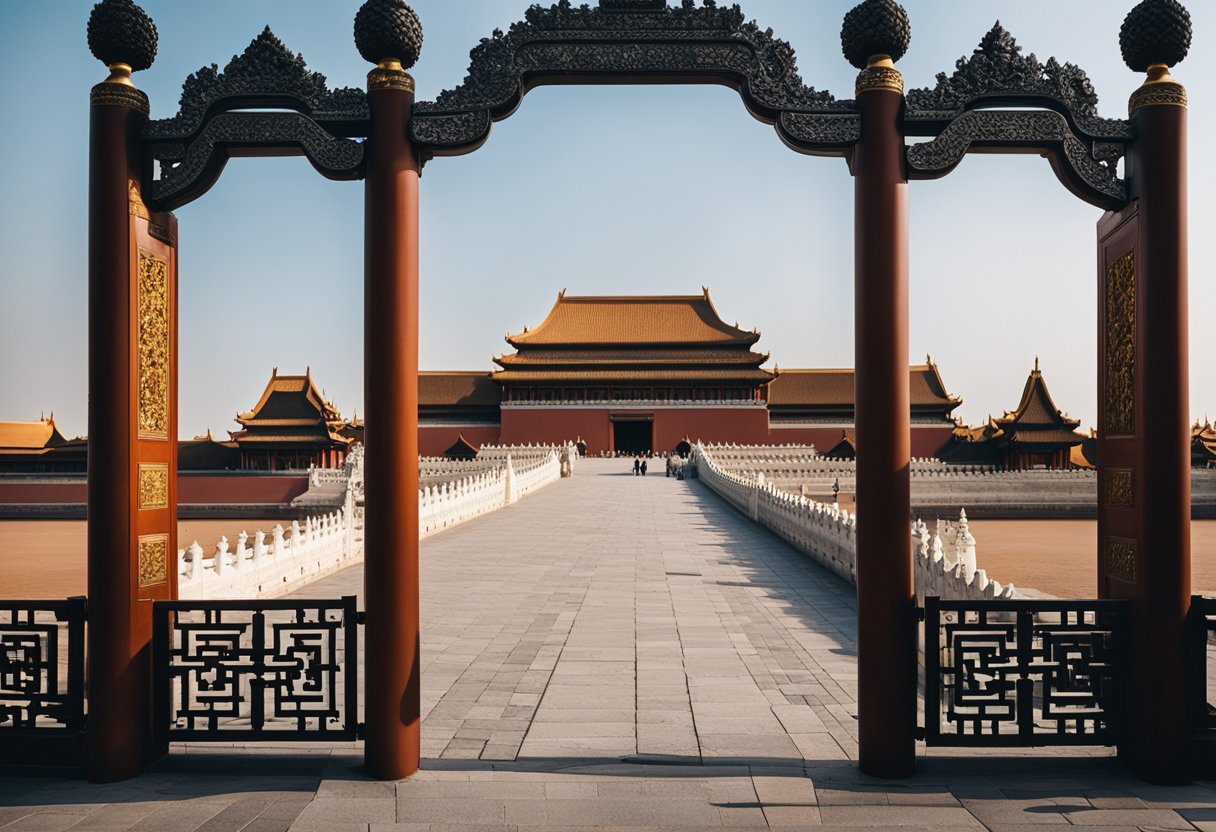
The transformation of Forbidden Cities illustrates the profound shift from imperial rule to contemporary governance. Such places, once bastions of monarchical power, now serve as symbols and sites of cultural heritage within the modern nation-state.
Forbidden Cities During Revolutionary Times
During the tumultuous periods of revolution, Forbidden Cities were often focal points for change. The Forbidden City in Beijing, for instance, served as the imperial palace for both the Ming and Qing dynasties. It witnessed the end of monarchical rule when the Republic of China was established in Nanjing, indicating a significant ideological shift away from imperial governance.
Adaptations Post Dynasty
After the fall of dynasties, Forbidden Cities like Beijing’s complex, which houses the Palace of Heavenly Purity, underwent extensive adaptations. These locations were transformed into public museums and spaces, allowing broader access and serving to educate about the past. Tiananmen Square and the Forbidden City became integrated into the civic fabric, celebrating the nation’s heritage while reflecting modern values of accessibility and historical retrospection.
Natural and Man-made Defences
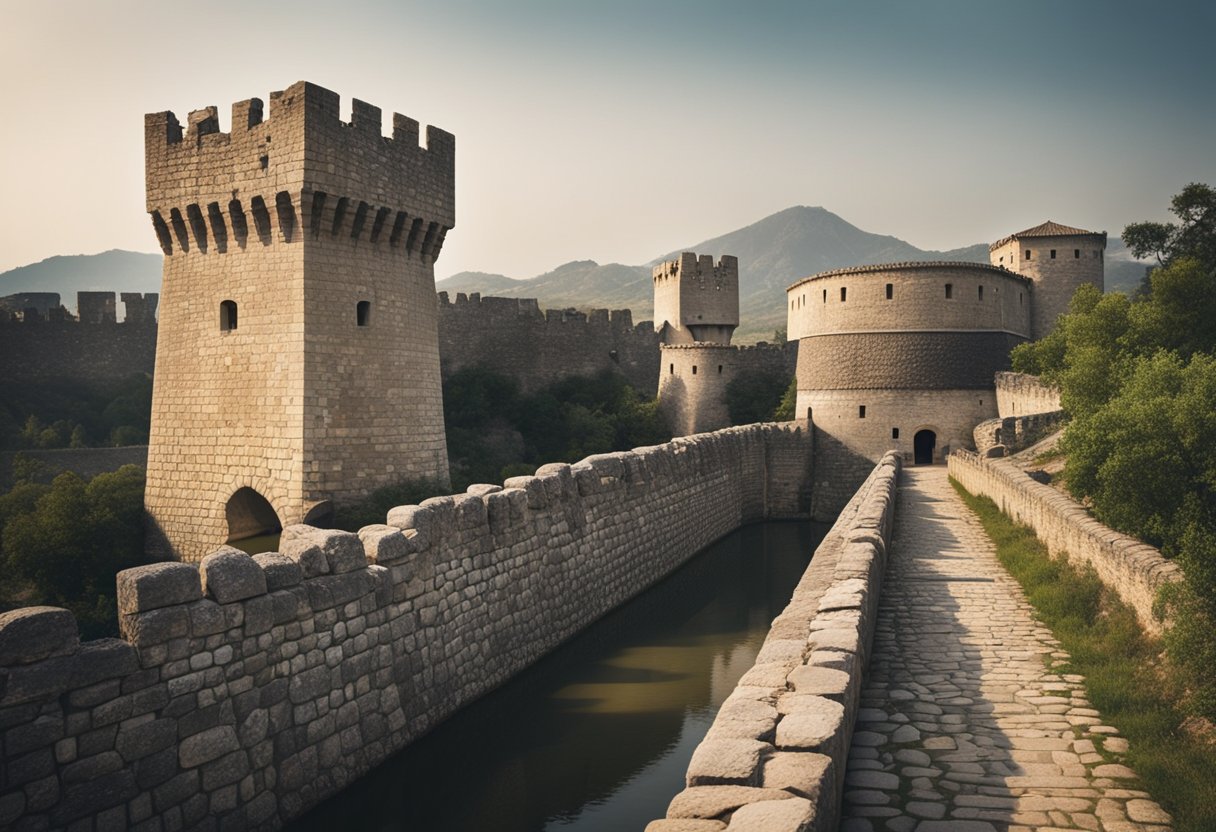
In exploring the world’s closed communities, we encounter sophisticated defence systems that combine both natural elements and human ingenuity. These integrated mechanisms have historically played a pivotal role in the protection and seclusion of these enclaves.
Fortifications and Security Measures
Closed communities are often characterised by robust fortifications such as walls, towers, and moats. In the Forbidden City, for instance, the Meridian Gate served not just as a grand entrance but also as a strategic vantage point for guards. It led to the Gate of Supreme Harmony, which further controlled access to the heart of the imperial complex. Within these spaces, security measures were paramount, with a dedicated contingent of workers and guards maintaining the integrity of the City’s defences.
The Golden River, crossed via exquisite bridges, added both aesthetic charm and a layer of defence, effectively serving as a moat to deter any would-be intruders. Its winding course reflected the confluence of natural beauty and strategic design in safeguarding the community.
Influence of Natural Landscape
The defensive strategies of these communities were often inspired by their natural surroundings. For example, the imperial powers meticulously designed the Imperial Garden not only for tranquillity but also for protection. The gardens were an intrinsic part of the Forbidden City’s defences, with natural features such as rocks, trees, and waterways providing concealment and obstacles to potential attackers, thereby enhancing security through a serene, yet strategic landscape design.
In many enclaves, the particular geography, such as mountains, rivers, or coastlines would naturally limit access, with human constructions complementing these features. By harnessing the natural landscape, these closed communities maximised their defences through a harmonious blend of the environment’s inherent protections and man-made fortifications.
Forbidden Cities in Modern Tourism
We explore the allure that forbidden cities hold in modern tourism, focusing on how they have transformed from secluded enclaves to accessible cultural experiences for today’s travellers.
Visitor Access and Experiences
Tourism: Forbidden cities like Beijing’s Forbidden City, now housing the Palace Museum, have become pivotal destinations. They offer a glimpse into the past splendour of empires and dynasties.
The scale and grandeur of these sites often enthralls visitors. Specifically, the Forbidden City boasts over 980 buildings with more than 8,700 rooms that one can explore.
The various exhibitions and collections enrich the experience within the walls of such cities. For instance, the Hall of Preserving Harmony is one of the three main halls of the Outer Court of the Forbidden City and showcases cultural and historical treasures.
Adjacent to the Forbidden City is Jingshan, a park which provides panoramic views of the entire palace complex. This spot has become an essential extension of the visit for many tourists, as it reveals the Forbidden City’s vast expanse and architectural majesty.
Our understanding of these sites as more than just relics is augmented by the access we now have. The past is not only preserved but also shared and celebrated through discovery and learning, making our travels both enlightening and memorable.
The Interplay of Forbidden Cities and Chinese Artistry
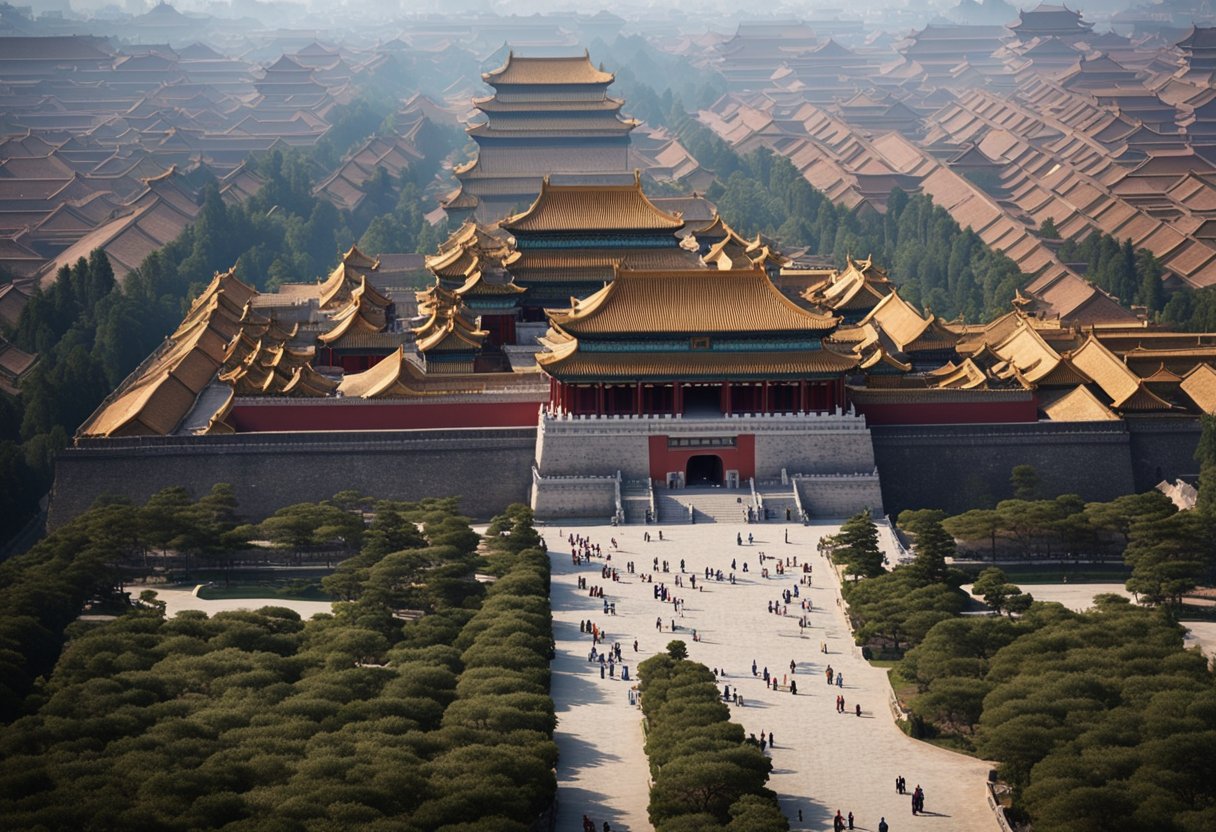
Forbidden cities, through their very existence, have become crucibles for Chinese artistry, encapsulating the profound relationship between architectural magnificence and artistic expression. These secluded enclaves not only served as seats of power but also as bastions of cultural development where craftsmanship and symbolism merged to set forth a visual narrative of the empire’s potency and sophistication.
Art and Craftsmanship
The construction of Forbidden Cities, like the resplendent precinct that is the Forbidden City in Beijing, showcases the pinnacle of Chinese artisanship. Each building within such a city was not just a structure but a canvas for artisans to convey grandeur and imperial dignity. For instance, the Hall of Mental Cultivation was more than a mere dwelling; it was ornamented with meticulous woodwork and ornate carvings, symbolising the emperor’s intellect and wisdom.
At the heart of these massive complexes, gardens emphasised harmony with nature, featuring a deliberate juxtaposition of the built and the grown, the empty space against the meticulously designed. Winter gardens, in particular, embodied a tranquil beauty designed to reflect serenity amidst the cold and provide a year-round retreat for the inhabitants of the living quarters.
Symbolism in Decoration and Design
Symbolism was intrinsic to the decoration within these cities, providing insight into Chinese cosmology and ethos. For example, the prevalent use of yellow glazed roof tiles represented the emperor’s supreme authority, as yellow was considered the colour of the earth, symbolising the centre of the universe, with the emperor being its human counterpart.
Dragons, phoenixes, and other mythological creatures found throughout the living quarters and on walls were not mere decorations but representations of power, prosperity, and auspiciousness. Similarly, the layout of rooms within these enclaves was never incidental; it was a physical manifestation of Confucian values and social order, with symmetry denoting balance and hierarchy.
By exploring these elements, we immerse ourselves in a profound understanding of how Forbidden Cities serve as grand archives of China’s artistic endeavours, with each hall, garden, and chamber holding its own story—stories etched in wood, painted on silk, and built with stone.
Frequently Asked Questions

In this section, we cover some of the most pressing queries regarding the world’s closed communities and inaccessible locations due to various circumstances.
What are some examples of locations that are permanently off-limits to the public?
Some locations remain strictly off-limits to the public for reasons such as military secrecy (e.g., Area 51 in the USA), the preservation of indigenous tribes (e.g., North Sentinel Island in the Indian Ocean), and protective measures for sensitive ecosystems (e.g., Ise Grand Shrine in Japan).
Which is the largest deserted metropolis across the globe?
The largest deserted metropolis in China is believed to be Ordos Kangbashi. It was designed for over a million people but remains largely uninhabited due to its remote location and economic factors.
What are the reasons behind the development of ghost cities in China?
The development of ghost cities in China is often attributed to rapid urbanisation, overdevelopment, and a mismatch between property prices and local incomes, leading to empty skyscrapers and unused infrastructure.
Can one legally visit any abandoned towns around the world?
Yes, many abandoned towns can be legally visited by the public. Towns like Chernobyl in Ukraine, after the nuclear disaster, and Bodie in California, a preserved historic ghost town, offer guided tours.
What are the primary causes leading to the desertion of ghost towns?
Ghost towns often emerge from economic downfalls like the collapse of local industries, natural disasters that render areas uninhabitable, or changes in resource availability, such as mining towns depleted of minerals.
What are the top ten most notable ghost towns to research?
Among the most notable ghost towns to research are Pripyat in Ukraine, Craco in Italy, Hashima Island in Japan, and Garnet in the USA. Each has a unique backstory, from nuclear disasters to mining declines.






